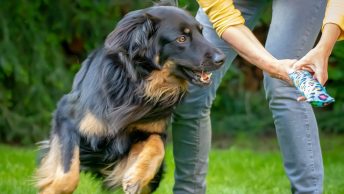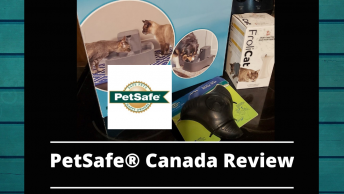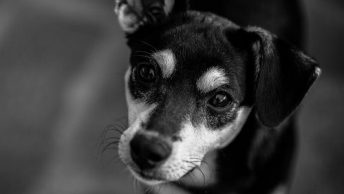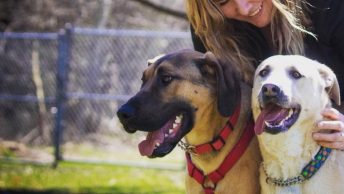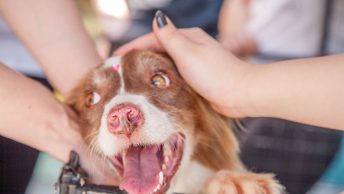Table of Contents
Tips On Building Trust With Your New Rescue Dog
Body Language
The first thing is building trust with your new rescue dog. When introduced to any new rescue dog is to avoid eye contact, or reaching out. You should let your guests know you are training your rescue, whether it be not to jump up or bark aggressively. Let them know that the dog will come to them when they are ready. DO NOT force a dog to interact if they are not comfortable.
The best thing to do is polish up on your dog body language and you can start to read your dog better. You can even yawn because it does send a calming message to your dog. It actually does work.
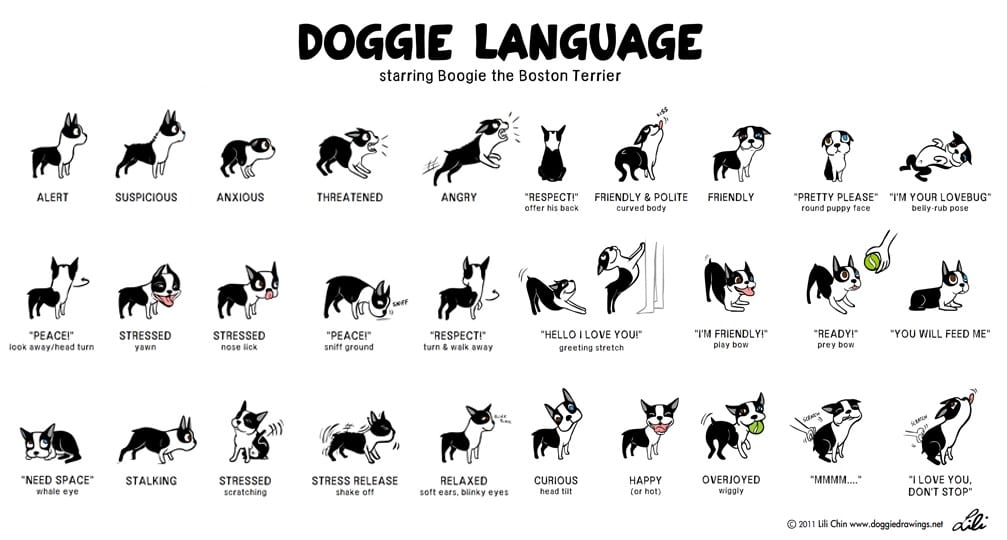
If the ears are upright and assertive they are in a suspicious mode. Let them have space and time. If the ears are back and the tail is wagging and they come to you. Now you can make contact. Until then I would suggest reassuring your pet that you will not force any situation on them. Eventually, they learn to make the choices on their own and through body language, you can determine what they are telling you.
In time the suspicious look usually will turn into curiosity. Remember you need to make every experience good and positive or it will set you back to square one on the learning blocks.
Positive Experiences:
Once you show your dog you’re there to let them make the choice, they are going to start looking to you for some sort of yes or no. They will start to focus on what you need or want them to do. Its the first step in building trust when it comes to strangers and new people they are being introduced to.
They may like some people and others they may not. It will all just take some time for both of you to adjust to certain situations. Try to start associating good things with you. Like when they are about to start barking, click and treat and focus on you, not the distraction. I do have another post on distraction you may want to read.
Set Some Boundaries:
Dogs don’t like the unfamiliar, so be sure to keep the dog in routine. This provides a solid foundation on which he can learn to trust you. Puppies can be different some will try and jump all over your guests and others will bark and run away. It really depends on the dog. But be prepared to handle both situations. Remember setting the boundaries are important. We had adopted Jasmine at 10 months old and she was only 94 lbs back then.
The first two weeks were rough. She needed to learn the boundaries at the same time I was building trust. I also had to build trust, she was a big and powerful breed that was somehow instinctive or by training very territorial and aggressive to others at first.
How I got her out of Guard Mode
Jasmine is a Perra Presa Canario. Because of her size, we didn’t want to have an aggressive dog, therefore we took the steps in changing it. First, all dogs need a job to do. They feel more secure if they have a place in the pack. So I would always tell her when she was barking at someone walking by, “Hey, that is my job, not yours” Click distract and then treat. She then started to realize she didn’t need to be the protector, I was her protector. She just had to be a puppy and learn again resulted in the first big leap of her not being on guard.
Avoid Problems with neighbors
She barked so much at everything, even leaves when we first got her home. Even to the point, we had to have mediation between our neighbor and us. Once our neighbors saw the powerful breed we just rescued. They began to realize how important it was to rehabilitate a dog with this much fear- aggression. Luckily they started to understand and work with us. So if they were in their yard gardening or cutting the grass, she would bark and they would reply “Its OK Jasmine, its just Joe or Mary” and she would stop and realize there was no threat to her. This took months not weeks, however, It paid off and now she is the perfect dog for us! Never give up, things will change. You just need consistency and a lot of patience and love.



